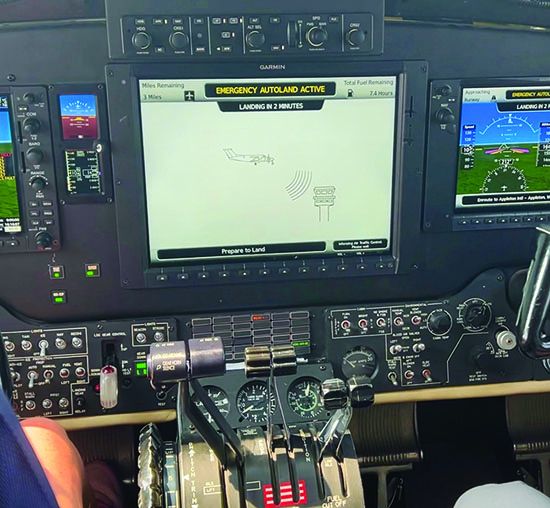When Garmin went public with its Emergency Autoland system for the Piper M600 turboprop in 2019—the first of several OEM type-certified applications that followed—it was natural to ask about the possibility of retrofit installations.
At the time, Garmin was noncommittal, saying that while it would be technically possible to bring the automation to the aftermarket, it wasn’t planning to do so—yet. Turns out the engineering for a retrofit Autoland was already in progress, while working with Piper on the M600 type certification.
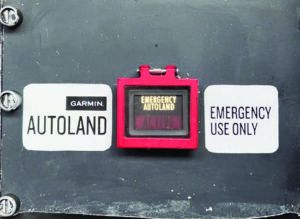
And so it was at AirVenture last July that Garmin rolled out the first Autoland and Autothrottle for aftermarket installation in select B200 King Airs. Wide-eyed, I strapped into the right seat of Garmin’s B200 for a flight demo with Garmin’s Jessica Koss and Will Johnson.
KING AIRS, LOGICALLY
It’s no surprise that Garmin chose the King Air 200 (and soon the King Air 300) as its first aftermarket retrofit. King Airs have earned bragging rights as one of the best in class for dispatch reliability and mission flexibility, and many are owner flown. Garmin’s FMS-embedded Autothrottle isn’t new; it’s been flying in later-gen Cirrus Vision Jets, Daher TBMs (and now the HondaJet Elite II) where it’s proving to be a single-pilot workload reducer. In the King Air interface, a major goal for Garmin was taming the dreaded engine failure.
Yes, there are King Airs in the wreck reports because pilots botched the recovery, so Garmin built in some smart logic to help, adding another layer to its
Autonomi suite of safety backstops.
Autothrottle is deeply connected with the G1000 NXi’s GFC 700 autopilot—a tight interface made even better with good system annunciation—plus smart power management cues for securing a failed engine with OEI ESP (One Engine Inoperative Electronic Stability and Protection). Single engine failures should be a non-event for pilots trained on the automation and flying the King Air.
Safety aside, Garmin’s King Air STC makes sense for the major Autothrottle and Autoland retrofit (commit to at least 300 hours of shop time). At press time there have been 835 King Airs retrofitted with Garmin’s G1000 integrated avionics—the only aircraft model where an aftermarket G1000 installation is possible. Considering the teardown and complexity, that’s an impressive number and proof that owners see value in spending big to modernize their aging King Airs.
Worth mentioning is that all of the previous Autoland and Autothrottle interfaces have been on Garmin G3000-equipped turbine singles. This is Garmin’s first interface in a twin and also for the G1000 NXi system.
At this time, not all King Airs are eligible, including smaller 90-series planes. The STC approval (which was imminent when I flew with the system in July 2023) covers B200 King Airs equipped with at least Phase II G1000 NXi hardware, plus ones with PT6A-42/52/61 engines with four-blade propellers and hydraulic landing gear, which is a requirement for the Autoland option. You can install Garmin’s Autothrottle without installing the Autoland, but Autoland won’t work without Autothrottle for obvious reasons. Garmin said that the majority of customers will likely choose both for the ultimate safety enhancement and automation.
DEEP INTEGRATION
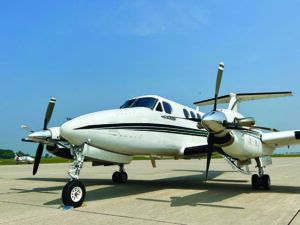
Garmin’s Autothrottle is designed and integrated as an entire system with the embedded GFC 700 autopilot. And unlike other aftermarket autothrottles without a nav interface, Garmin’s Autothrottle can be used from takeoff to touchdown (flying procedures along the way) thanks to the deep integration with the G1000 NXi’s flight management system. Tell it where and how fast you want it to go.
The Autothrottle’s servo actuator is based on Garmin’s GSA 87 autopilot servo, which is an electromechanical microprocessor-controlled unit with a brushless motor. I was surprised at how precise and smooth the GFC 700 interface allows the throttles to move. Additionally, the system uses a new GMC 711 mode controller with speed selector switches, and there’s an automatic FMS mode for tracking predefined speed or power targets from the G1000 NXi’s flight management system. The system is also smart enough to obey pilot-selectable ITT operating limits. Remember, the PT6As don’t have FADEC, so the Autothrottle can keep you from exceeding critical engine limitations and dollar signs that follow.
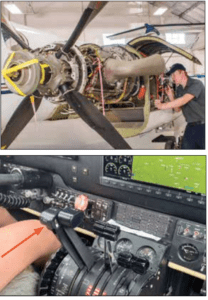
There’s also a manual mode where the Autothrottle maintains a pilot-selected speed. It’s not just about setting the power. Pilots flying older King Airs will appreciate other enhancements, including suppressed nuisance audible landing gear warnings. The aural alert is stifled above 600 feet AGL (the gear handle illuminates red), but when operating with full flaps and the landing gear retracted, you can’t silence the landing gear warning horn. There is an Autothrottle disconnect button on each power lever.
You program the Autothrottle on the G1000 NXi’s MFD Flight Plan page, where you select things like maximum and normal cruise power settings, plus climb and descent speed schedules.
FLYING IT

If you haven’t flown the latest G1000 NXi, the current version will look different, especially when taxiing. Coming off the ramp at Appleton Airport in Wisconsin, the system (with Garmin’s latest SafeTaxi software) had no shortage of detail of the surrounding area, displaying a 3D view of the environment on both PFDs. The bird’s-eye view remains onscreen until you’re within 70 degrees of the runway’s centerline, where up comes the normal flight displays for takeoff.
We did an Autothrottle-engaged takeoff and it’s as simple as arming it and advancing the power levers beyond the 1000 foot-pound settings. The Autothrottle engages and annunciates (AT T/O) on the upper left of the G1000 NXi MFD near the power gauges, verifying that the computer has command of the power. Hover a hand over the levers until after V1.
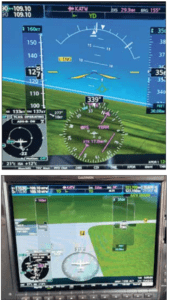
If an engine fails, the autopilot-based OEI ESP (standing by in the background and detecting that the autopilot’s rudder boost has activated) will adjust the PFD’s roll limit indicators from 45 degrees inward to 10 degrees toward the failed engine and 40 degrees on the good engine. The pitch limits shrink from 20 to 10 degrees nose up and from 15 to 5 degrees nose down. OEI ESP is disabled with a push-button panel switch, where the system returns to the autopilot’s normal ESP mode. There’s also automatic low airspeed protection when below VMCA, plus 15 knots indicated. The idea is to minimize excessive attitudes when dealing with the power loss. Like other ESP applications, you feel slight pressure on the flight controls to hopefully guide you back to recommended control inputs.
During an engine failure after V1 (90 knots is Garmin’s conservative programmed number for the King Air 200) with the Autothrottle engaged, both Autothrottle servos park. Think heavy-duty friction lock, but light enough to overpower. There’s a “check power” aural alert for the pilot to verify a failed engine.
If an engine fails in the climb, cruise or approach, the system parks the failed engine’s power lever (during the failure the lever would likely advance to the max torque position as it tries to add power) and it’s up to the pilot to disconnect the autopilot and the Autothrottle and secure the failed engine.
In the terminal environment you can set the Autothrottle to the manual mode and preset speeds for it to fly to the runway.
AUTOLAND
What can be said about Autoland that hasn’t already? We covered it extensively in the December 2019 Aviation Consumer. Pushing the button somehwere over Green Bay, Wisconsin, Autoland flew the King Air through a tight approach and flawless touchdown. If you don’t activate it manually, the EDM (Emergency Descent Mode) takes over. It arms above 20,000 feet pressure altitude, and activates with the cabin altitude (ALT WARN) annunciator. The aircraft enters a 90-degree descending left turn to 15,000 feet and if there is no pilot interaction with the system after one minute, Autoland takes over. It also activates when the autopilot is in LVL (Level) mode for a few minutes, where it assumes the pilot lost command.
During an activation, the anti-ice vanes deploy, the de-ice boots run repeatedly on a three-minute timer if the OAT is less than 40 degrees and approach flaps come in when the airspeed is below 190 knots and within 10 miles of the airport and less than 3000 feet. On my demo, the gear came down below 160 knots and landing flaps below 140 knots. There was automatic moderate braking (no anti-skid or reverse) and the plane tracked the centerline making appropriate corrections. The engines shut down when the aircraft slowed to less than 5 knots. Impressive, still.
how much for all that?
List price for the King Air Autothrottle kit is $44,995 and Autoland is $32,995. This doesn’t include the G1000 NXi upgrade. We’ll keep tabs on field retrofits and report back with an update.

See a video report on the King Air at https://tinyurl.com/44jsjuav.

